April 15, 2014
Five Great Heroes for Small Girls
Navigating media with a young girl can be a disheartening experience. If you think representation matters, like I do, you’re constantly on the lookout for smart, confident, diverse girls represented in interesting ways. They can be hard to find, but not impossible. Six years in, I have built a small but sturdy library.
Pippi Longstocking
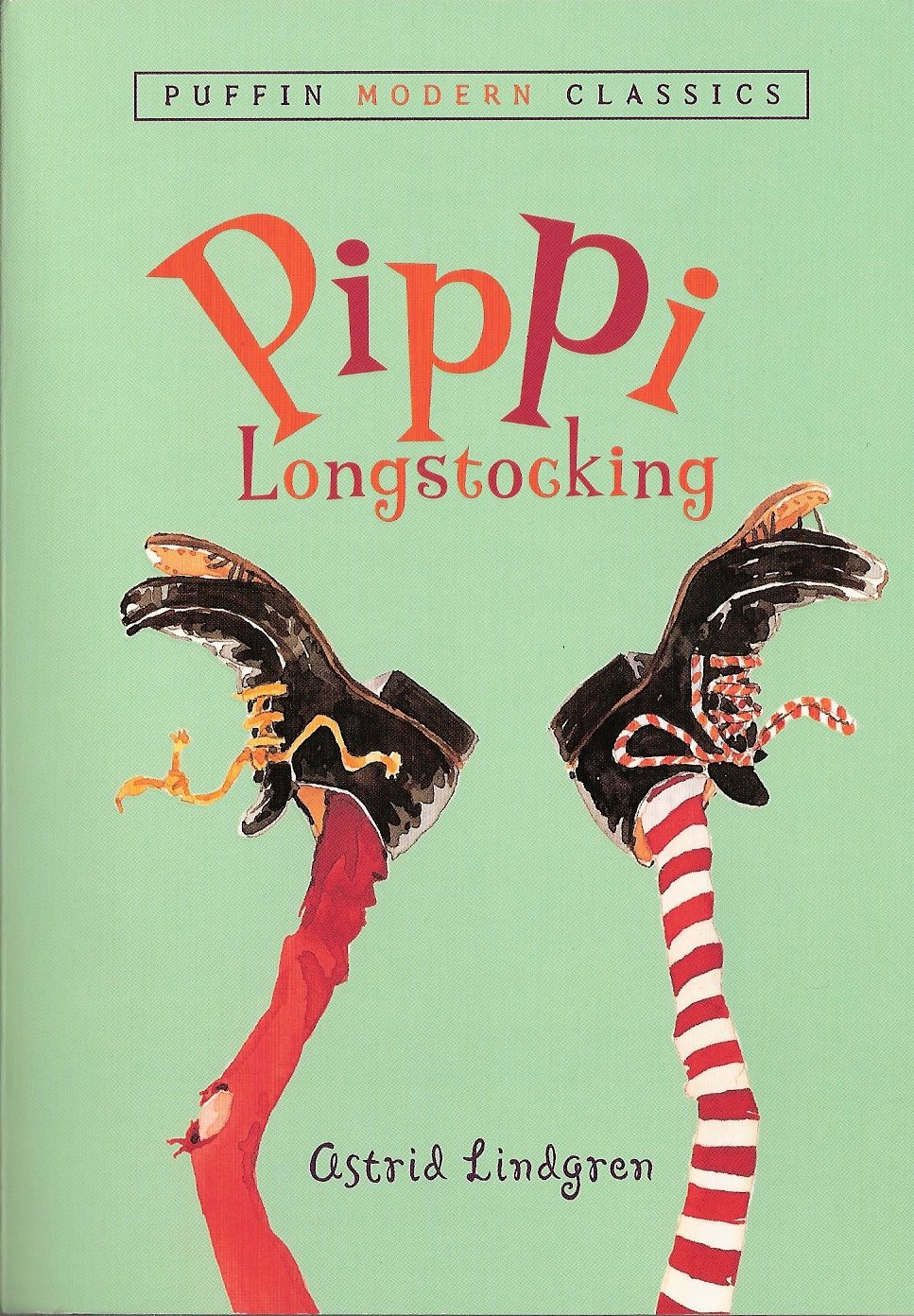 Pippi Longstocking, the hero of Astrid Lindgren’s eponymous books, was my #1 most favourite female hero for kids before I actually had kids. There were very few characters I, personally, identified with more when I was eight. Pippi lives alone with a horse and a monkey. She has incredible super-strength, which is neat, but not nearly as enticing as her independence. She has a father somewhere, distantly, who is a buccaneer captain. Pippi isn’t bothered by her father’s absence since he is alive and merely busy having adventures, so Pippi’s feral independence isn’t darkened in any way by loss or grief. She just straight up gets to do anything she likes, and does.
Pippi Longstocking, the hero of Astrid Lindgren’s eponymous books, was my #1 most favourite female hero for kids before I actually had kids. There were very few characters I, personally, identified with more when I was eight. Pippi lives alone with a horse and a monkey. She has incredible super-strength, which is neat, but not nearly as enticing as her independence. She has a father somewhere, distantly, who is a buccaneer captain. Pippi isn’t bothered by her father’s absence since he is alive and merely busy having adventures, so Pippi’s feral independence isn’t darkened in any way by loss or grief. She just straight up gets to do anything she likes, and does.
Mosca Mye
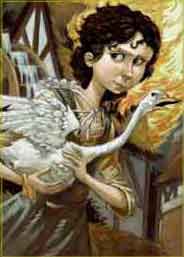 Mosca Mye is the hero of Frances Hardinge’s incredible books, Fly By Night and Twilight Robbery. Another lone, independent 12-year-old, Mosca does have a darker past, and it adds a definite edge to her character. Razor-sharp, Mosca escapes her dull relatives after sort-of-accidentally-on-purpose burning her uncle’s barn to the ground and freeing the loquacious conman, Eponymous Clent, who comes to be her partner in crime. She also has a goose named Saracen, who is the fiercest creature in all the world. Mosca’s not old enough to have lost a childlike innocence, despite her street smarts, and she survives all sorts of dangerous encounters on wit alone. Bonus points for major themes of literacy!
Mosca Mye is the hero of Frances Hardinge’s incredible books, Fly By Night and Twilight Robbery. Another lone, independent 12-year-old, Mosca does have a darker past, and it adds a definite edge to her character. Razor-sharp, Mosca escapes her dull relatives after sort-of-accidentally-on-purpose burning her uncle’s barn to the ground and freeing the loquacious conman, Eponymous Clent, who comes to be her partner in crime. She also has a goose named Saracen, who is the fiercest creature in all the world. Mosca’s not old enough to have lost a childlike innocence, despite her street smarts, and she survives all sorts of dangerous encounters on wit alone. Bonus points for major themes of literacy!
Zahrah the Windseeker
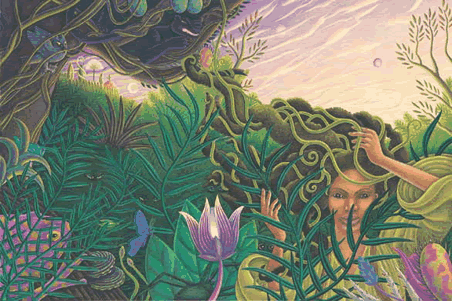 I’m partial to bold, independent heroes, but my elder daughter is a different creature. Adventures are scary to her, even when they come out well in the end, and so she instantly attached herself to Nnedi Okorafor-Mbachu’s Zahrah the Windseeker (winner of the 2008 Wole Soyinka Prize for Literature in Africa). Zahrah’s a shy, contemplative 13-year-old who is absolutely reluctant to go charging off into danger. She needs to think, internalize and understand – and occasionally be given a final firm shove. But she has strength of character and wisdom beyond her years, not to mention SHE CAN FLY, which is obviously amazing.
I’m partial to bold, independent heroes, but my elder daughter is a different creature. Adventures are scary to her, even when they come out well in the end, and so she instantly attached herself to Nnedi Okorafor-Mbachu’s Zahrah the Windseeker (winner of the 2008 Wole Soyinka Prize for Literature in Africa). Zahrah’s a shy, contemplative 13-year-old who is absolutely reluctant to go charging off into danger. She needs to think, internalize and understand – and occasionally be given a final firm shove. But she has strength of character and wisdom beyond her years, not to mention SHE CAN FLY, which is obviously amazing.
Kiki
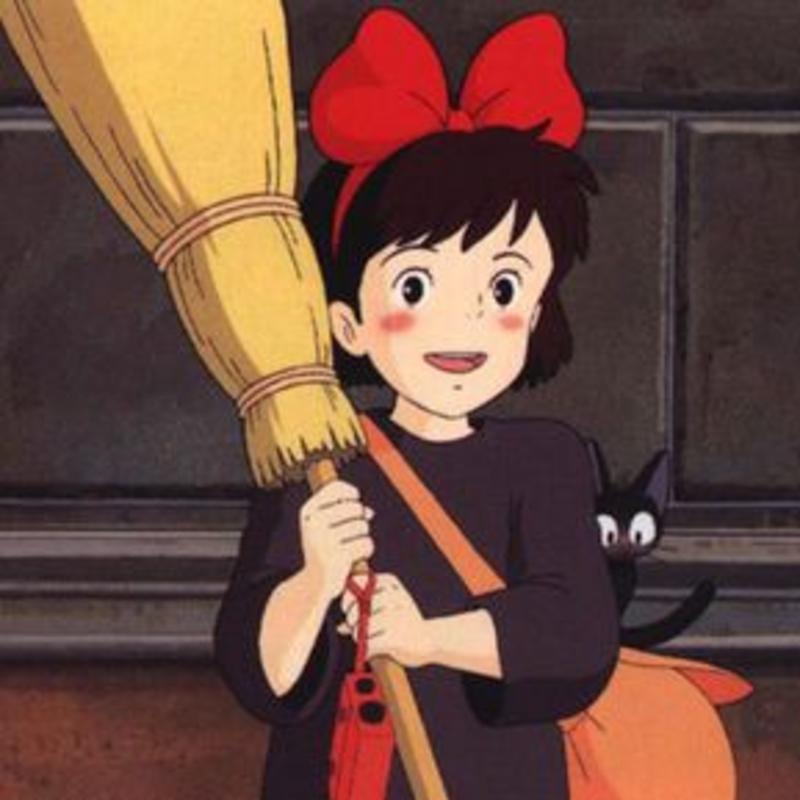 It would be easy to make this a list of characters from Hayao Miyazaki’s Studio Ghibli films, but let’s stick to one. Kiki is probably the strongest of Miyazaki’s characters. The film is about her and her growth as a character, and very little else. But it’s enough. Kiki’s independent, but less sure than some of the more assertive characters. She’s a witch, but she doesn’t know what her special skill is yet, and she quickly learns she isn’t as rich or fancy as other girls in the big city she has chosen to live in. Her fears and struggles are terrible relatable, though Kiki never sacrifices her fundamental goodness. Though she’s almost a young woman, the film’s lack of a “bad guy” makes it wonderful for kids of any age.
It would be easy to make this a list of characters from Hayao Miyazaki’s Studio Ghibli films, but let’s stick to one. Kiki is probably the strongest of Miyazaki’s characters. The film is about her and her growth as a character, and very little else. But it’s enough. Kiki’s independent, but less sure than some of the more assertive characters. She’s a witch, but she doesn’t know what her special skill is yet, and she quickly learns she isn’t as rich or fancy as other girls in the big city she has chosen to live in. Her fears and struggles are terrible relatable, though Kiki never sacrifices her fundamental goodness. Though she’s almost a young woman, the film’s lack of a “bad guy” makes it wonderful for kids of any age.
Zita the Space Girl
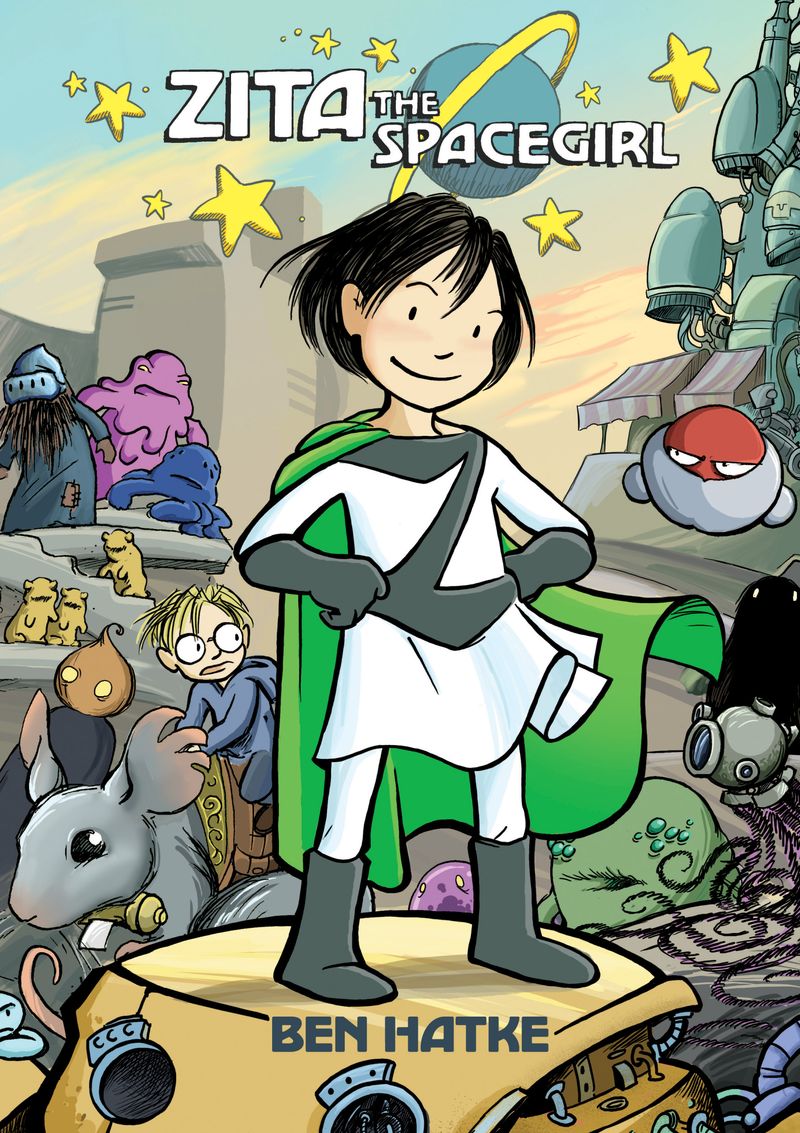 Ben Hatke’s Zita the Spacegirl (along with the sequels Legends of Zita the Spacegirl and The Return of Zita the Spacegirl) has pretty much everything you can ask for in space opera, pared down to the innocent scale of a young girl. Zita has arrived on a strange planet via a portal triggered by her best friend. He’s abducted: she dives through to rescue him. Instantly she’s thrown into huge, galaxy-spanning plots, con artistry, large scale rescue missions, desert crossings, overthrowing governments, salvaging robots, riding giant mice, standing up for economic refugees – have I missed anything? Probably – Zita almost has too much going on, but this never bothered my kids. Zita’s powers are pluck and the moral high ground – and it works.
Ben Hatke’s Zita the Spacegirl (along with the sequels Legends of Zita the Spacegirl and The Return of Zita the Spacegirl) has pretty much everything you can ask for in space opera, pared down to the innocent scale of a young girl. Zita has arrived on a strange planet via a portal triggered by her best friend. He’s abducted: she dives through to rescue him. Instantly she’s thrown into huge, galaxy-spanning plots, con artistry, large scale rescue missions, desert crossings, overthrowing governments, salvaging robots, riding giant mice, standing up for economic refugees – have I missed anything? Probably – Zita almost has too much going on, but this never bothered my kids. Zita’s powers are pluck and the moral high ground – and it works.
*
I’ve had a thing or two to say about good representations for young girls before, and my essay “The Princess Problem” is now available as part of Jim C. Hines’ Invisible: Personal Essays on Representation in SF/F. Proceeds from the sale of the book will be donated to Con or Bust, a fund administered through the Carl Brandon Society that helps get people of color/non-white people to attend SFF conventions. Take a look! Excellent work within.

My sister just had a beautiful baby girl – Caleesi. I’ll put these books on my list to buy for when she’s ready. Thanks!
AMAZING name! 😀 But babies… that reminds me. This one is great for even smaller girls:
https://www.goodreads.com/book/show/6352078-tell-me-a-dragon
I showed Kiki’s Delivery Service to my daughter when she was two or three, because the lack of a bad guy did indeed seem to make the film suitable for all ages. During the one scene of near-action, when a dirigible goes off course for about 8 seconds, my daughter freaked, and spent the next five weeks scanning the skies for crashing dirigibles. Explaining that the nearest dirigible was about 1800 miles away did not seem to help. So the point here is that there are never any guarantees how kids will react to movies, and that one’s milage may vary. I’d recommend Kiki to other kids without hesitation, but you have to know your own child….
This was absolutely my experience with my daughter at 2-3, Robert! She refused to watch it again between the ages of 3-6 because she had this traumatic memory of poor Tonbo dangling from the sky. It’s intense, but at the very least it is good-natured. Now, at 6, she can manage it.
(Although for a brief period when she was two and a half, she told me dirigibles were her favourite animal, and they ate “people”.)
She had a similar reaction to Sesame Street at that age, though. She watched the episode where Mr Hooper has died, as well as one where the whole cast goes to Hawaii and Hooper falls off a surfboard and somehow she conflated the two and got the idea he had died of falling off this surfboard. She has refused to watch Sesame Street ever since.
Really, I have concluded that perhaps 2-3 year olds shouldn’t be watching television. :/